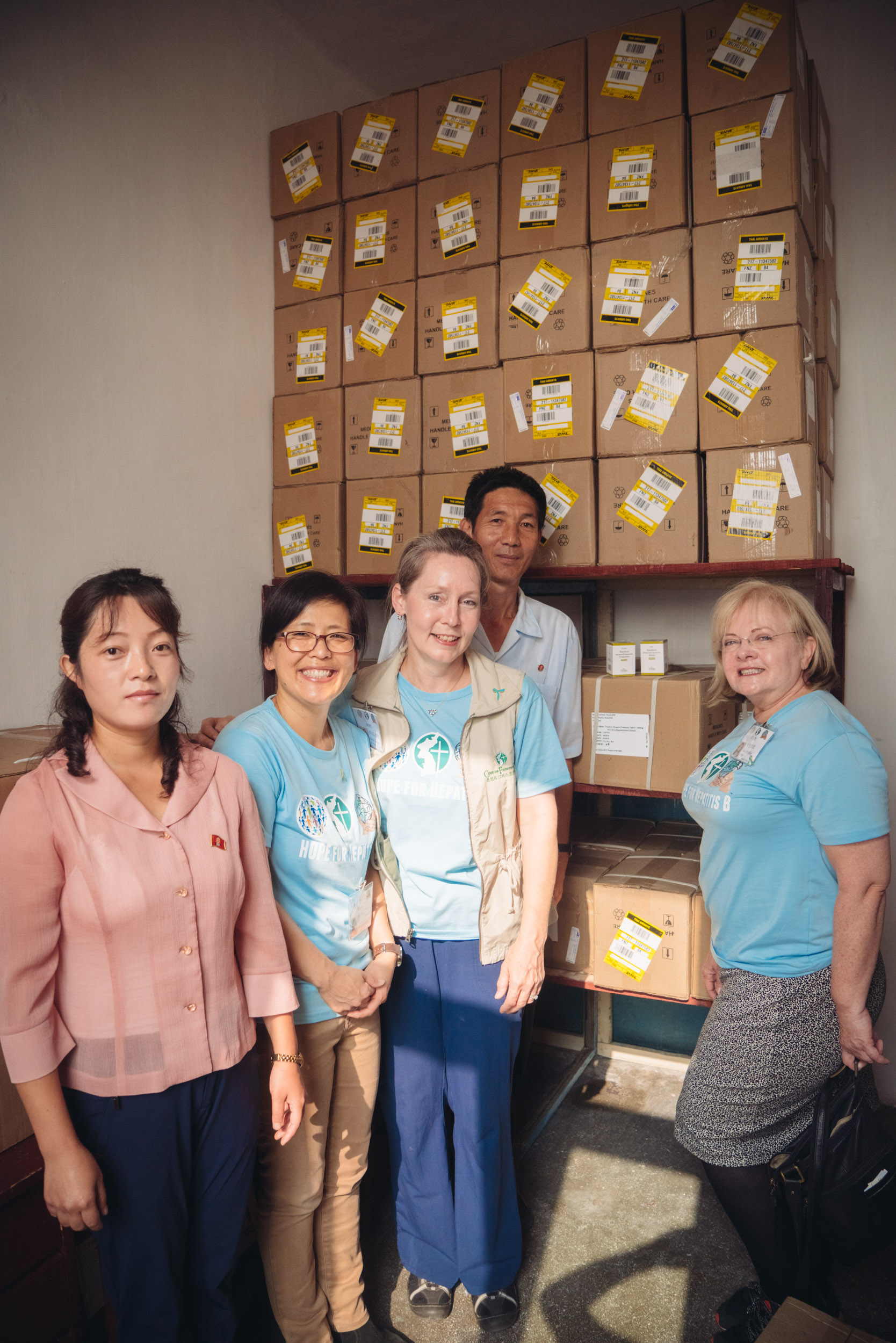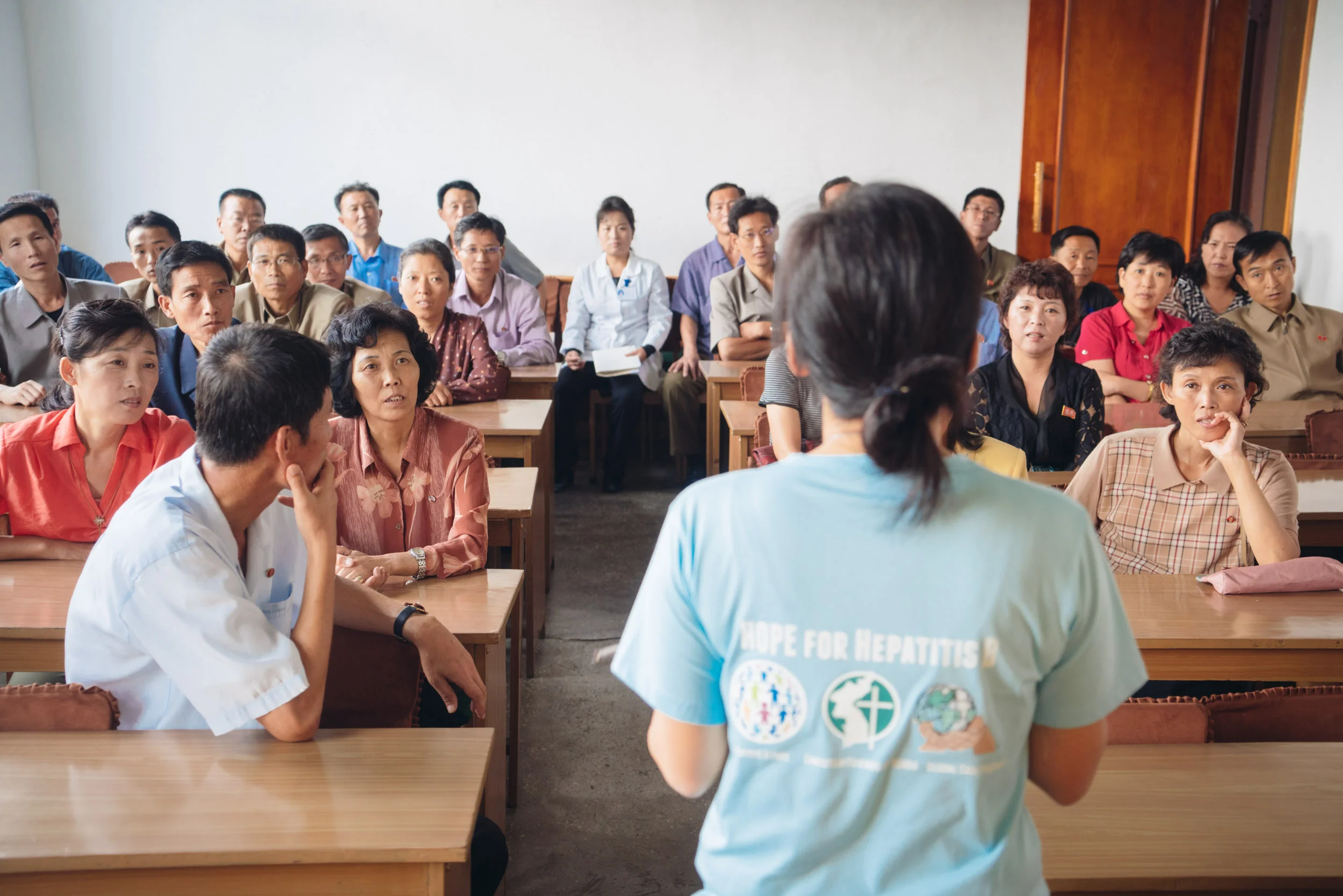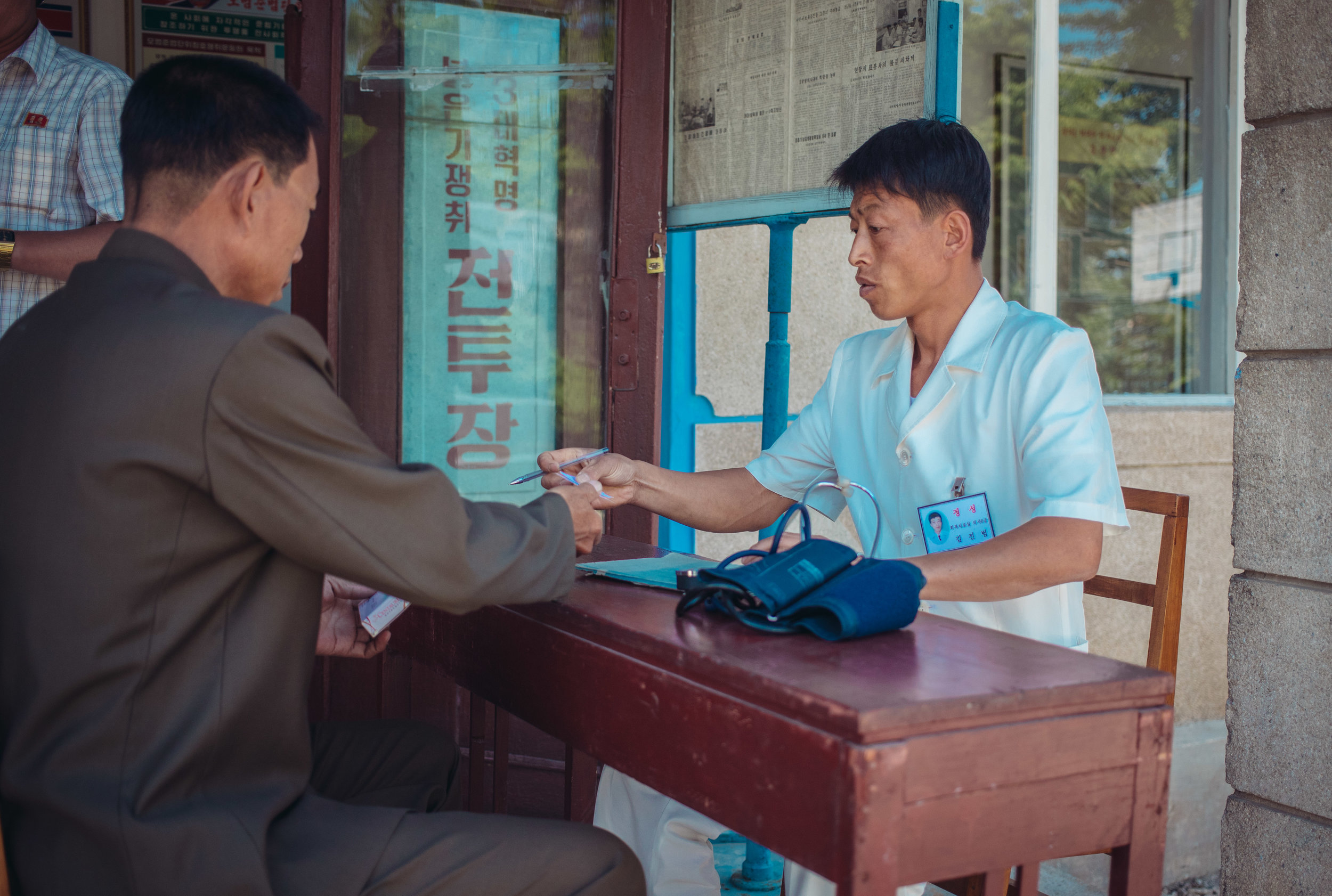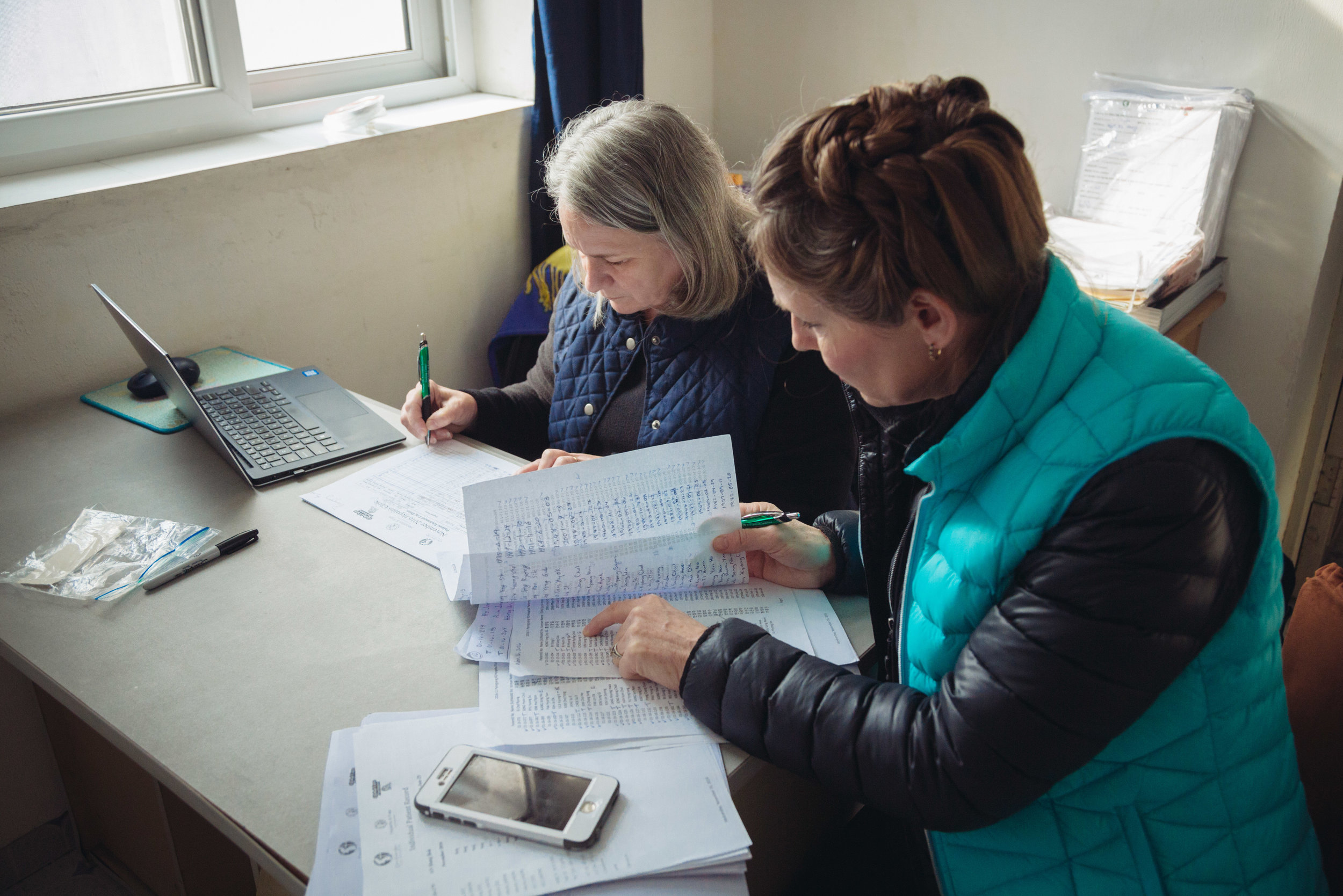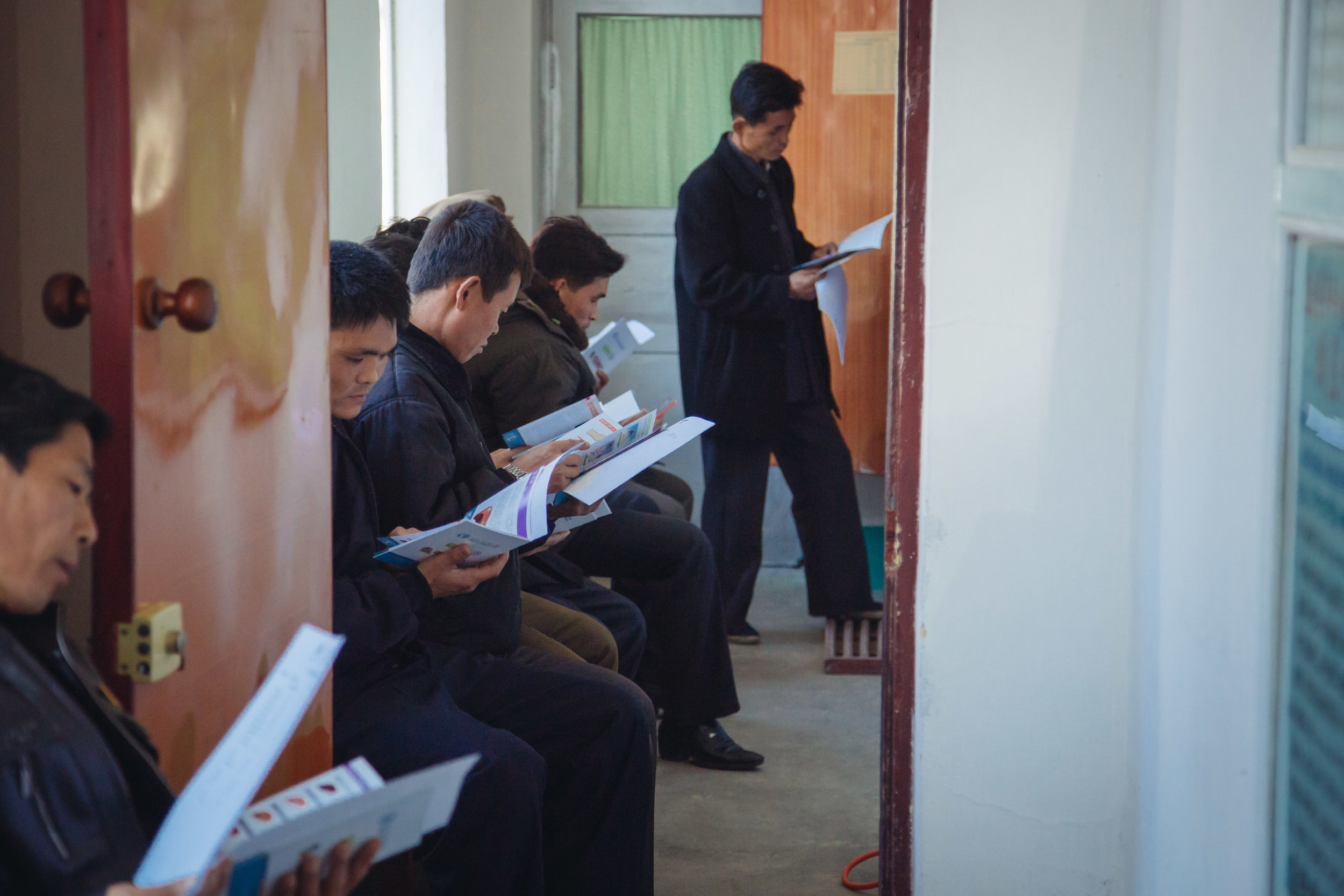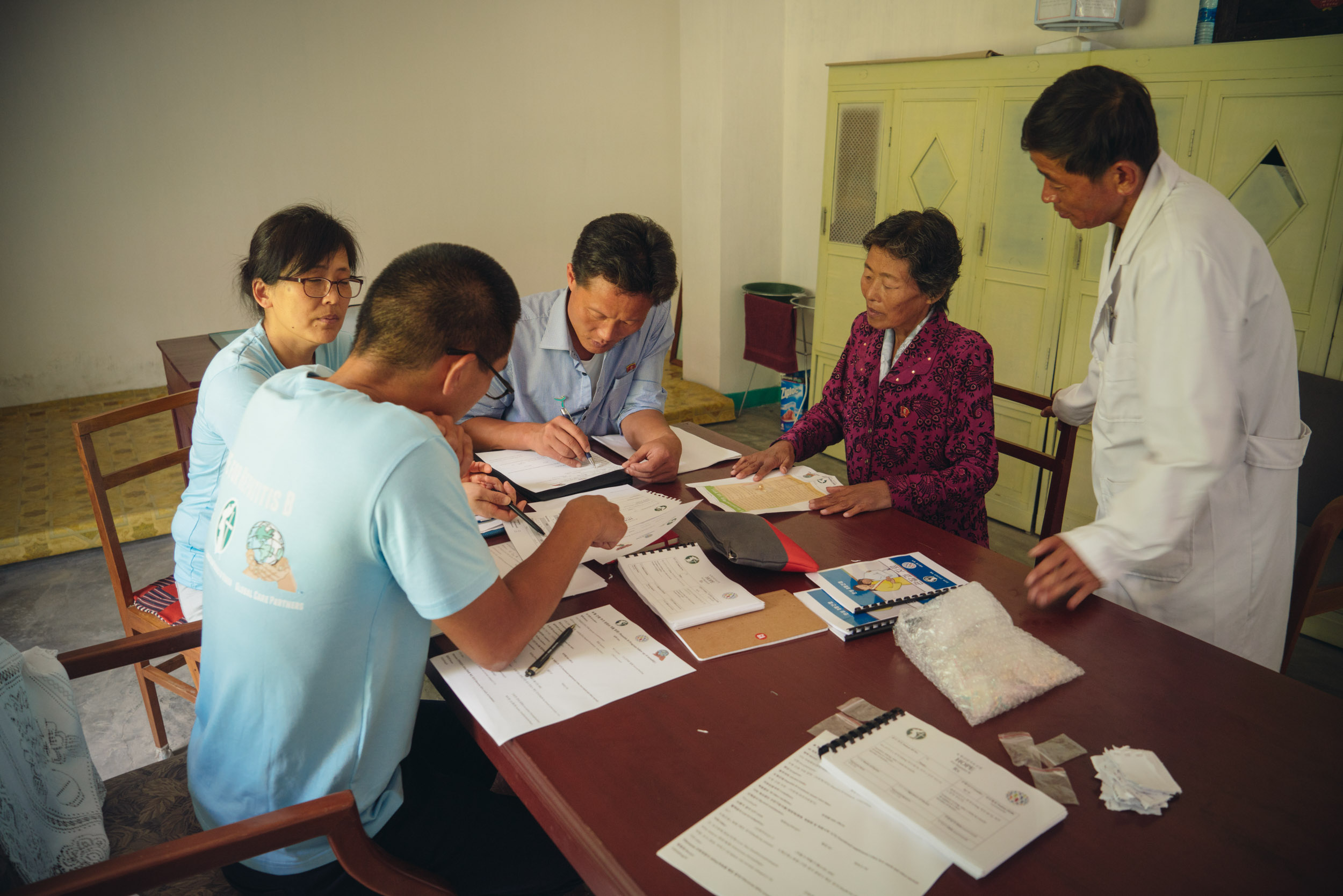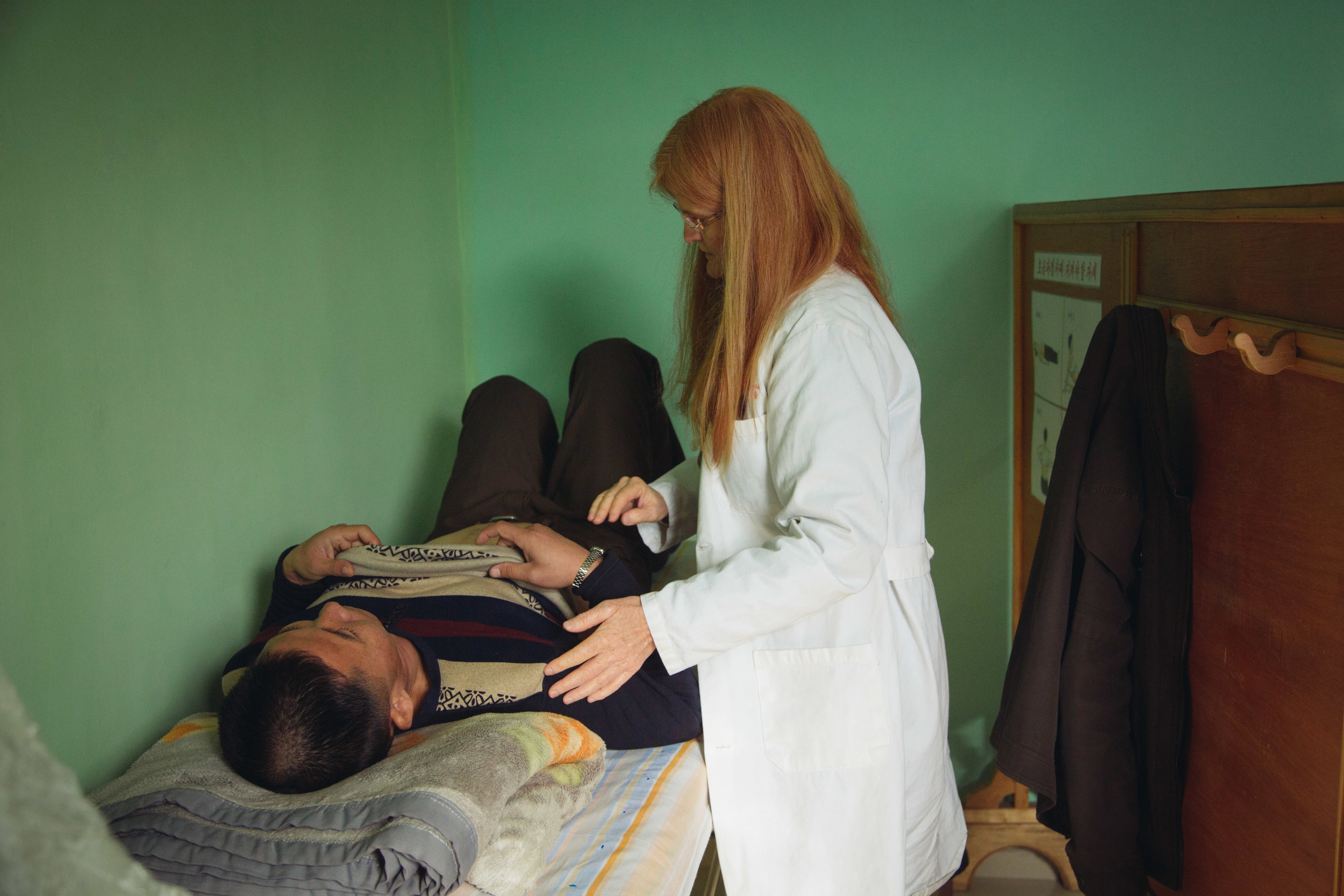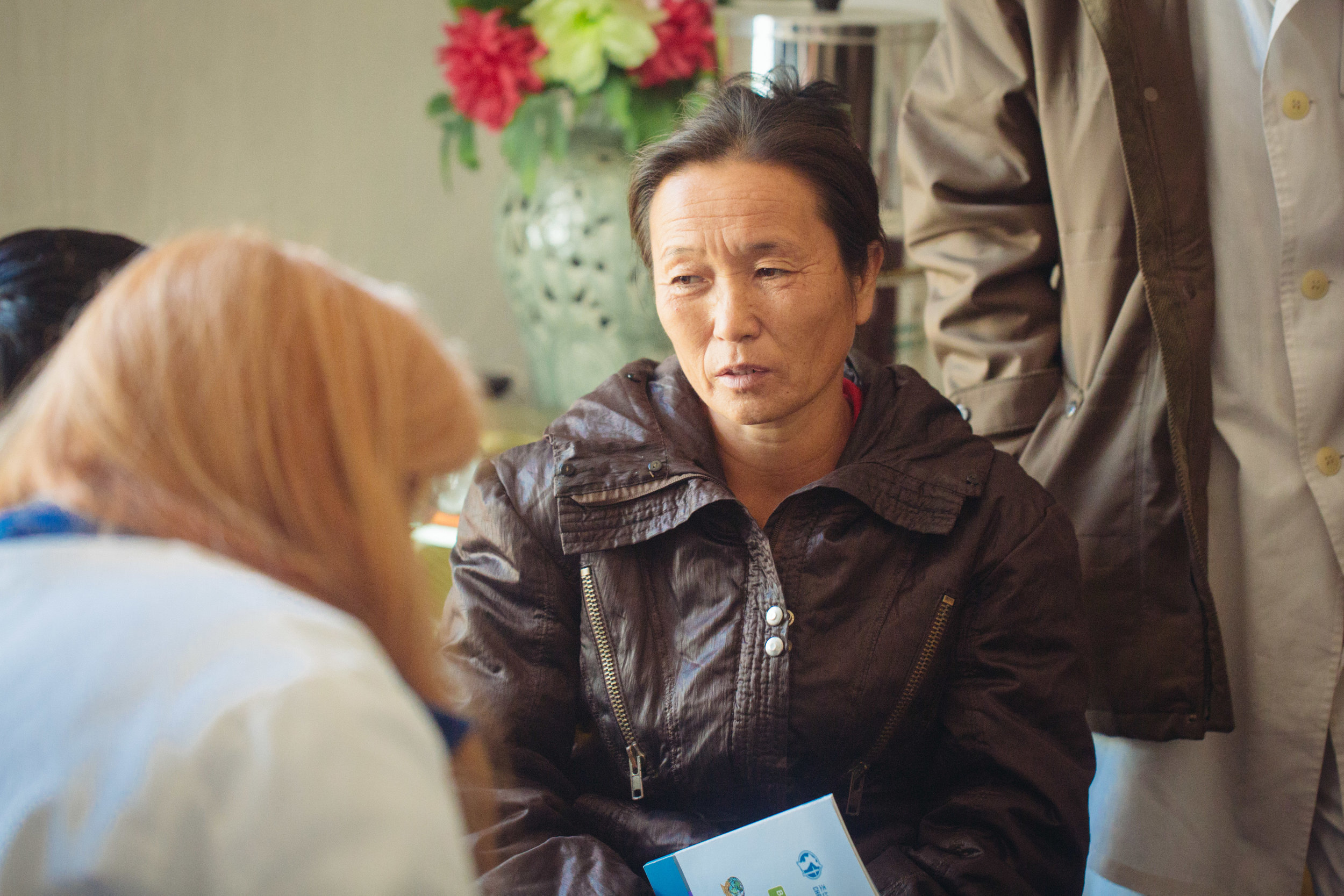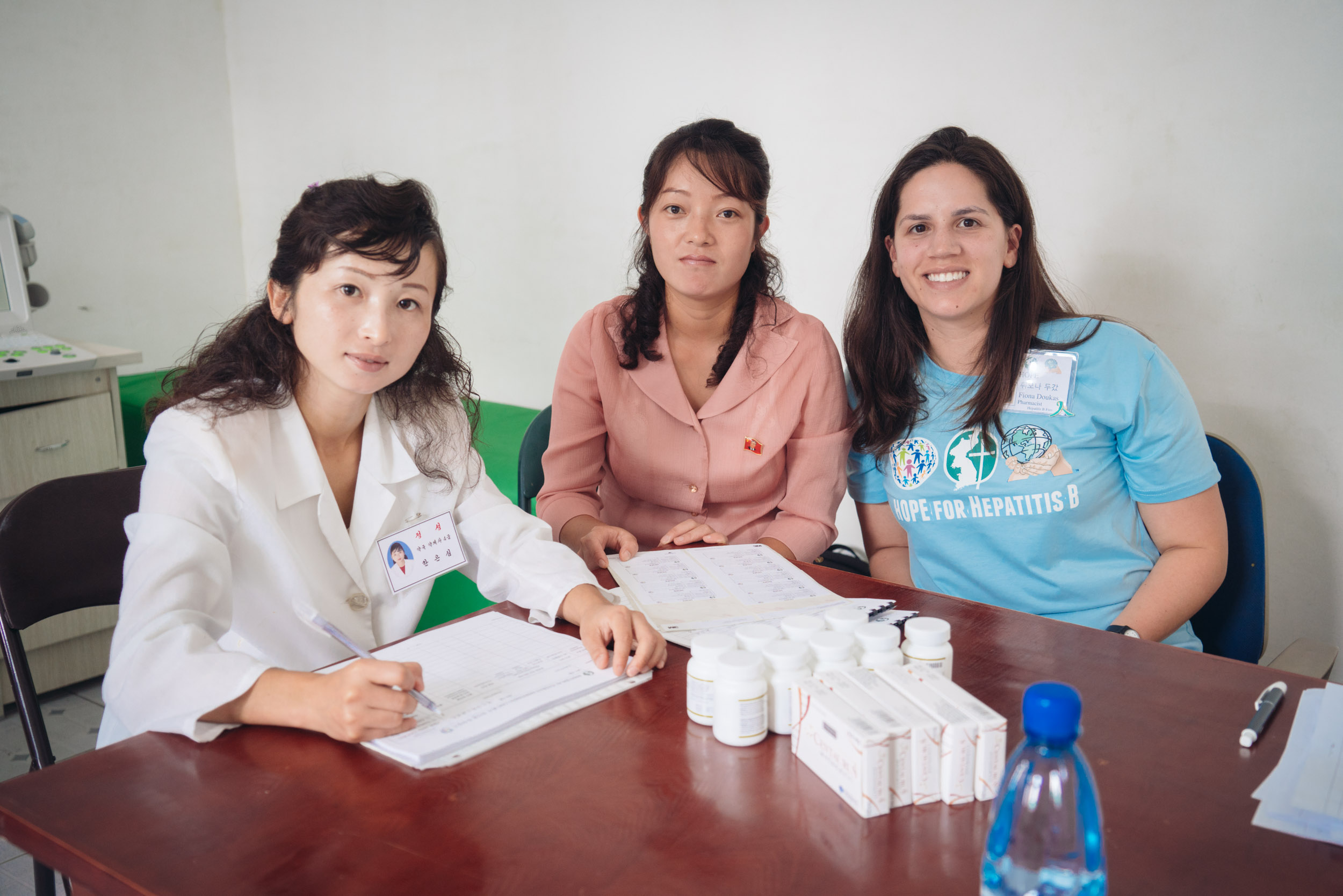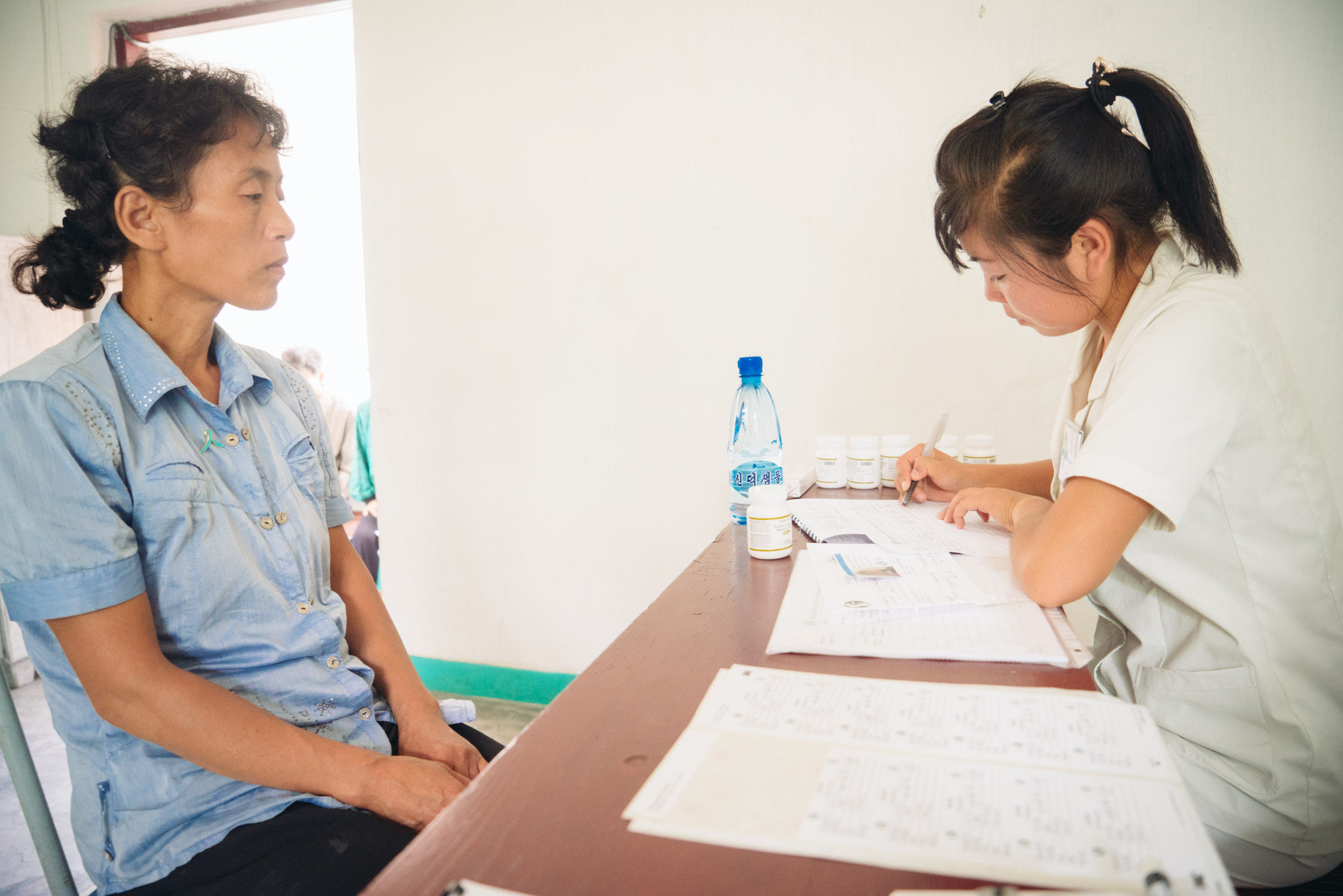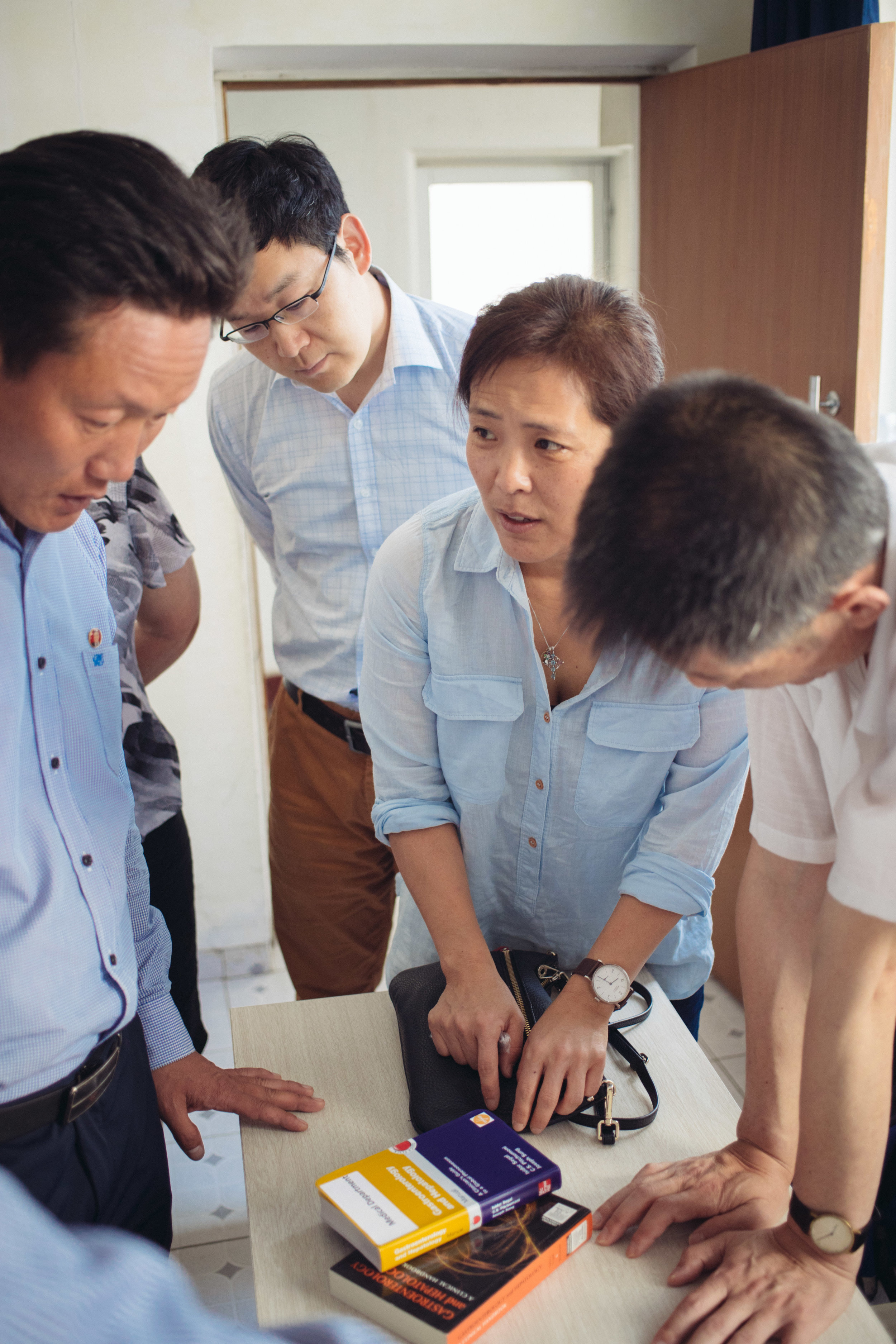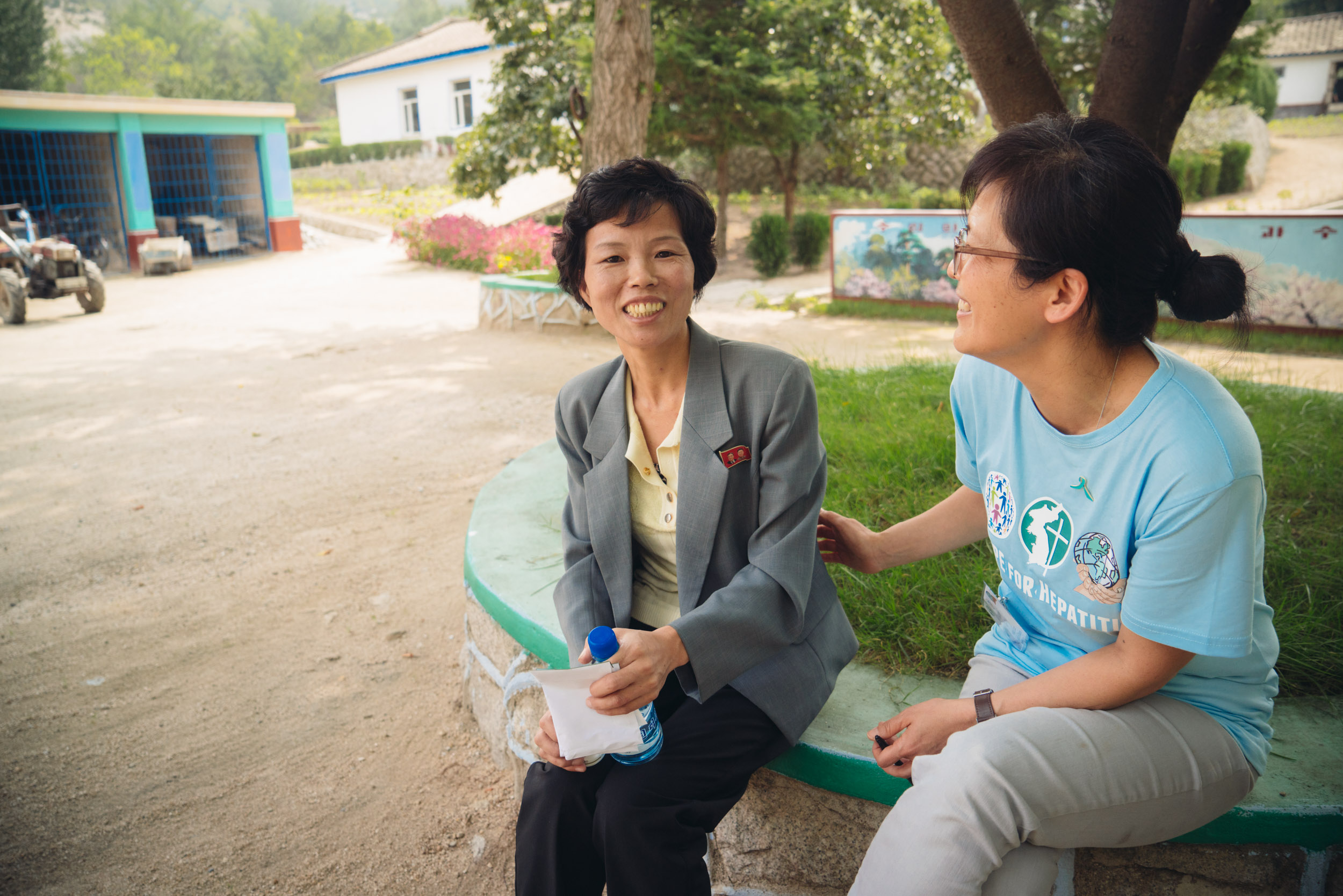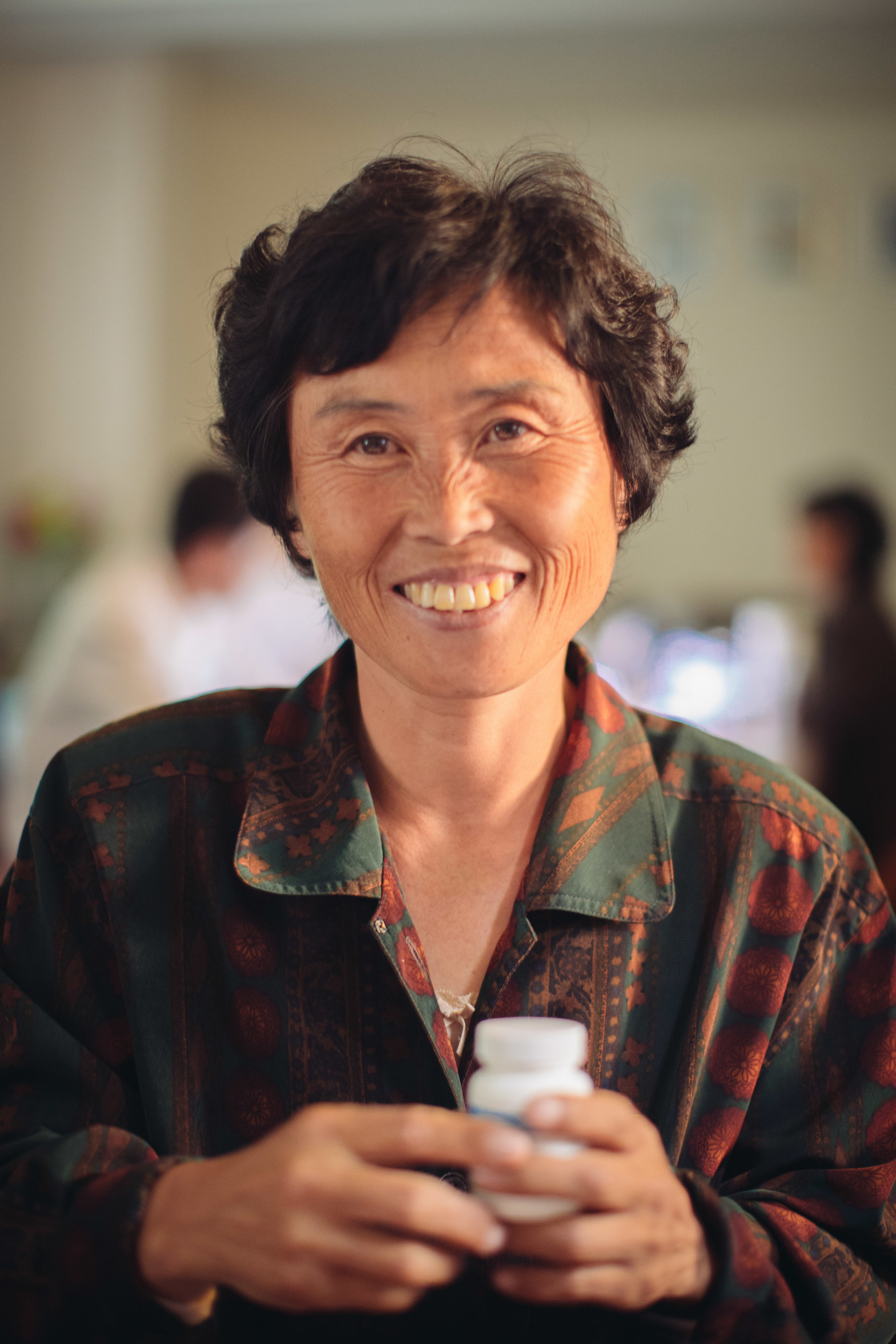In September 2016, our new Hepatitis B program (HOPE: Hepatitis B Overview and Program to trEat) launched. After months of negotiations, discussions and planning, Hepatitis B therapy was made available.
We are working alongside our partners at Hepatitis B Free (Australia) and Global Care Partners to support long-term access to anti-viral therapies for chronic Hepatitis B patients. The medicines used in the program (Tenofovir and Entecavir) suppress viral replication, prevent further inflammation and liver damage, and give hope for the preservation of both health and life while alleviating considerable suffering.
The HOPE program provides state-of-the-art medical care to Hepatitis B patients in a resource-challenged setting. Patients are evaluated through blood tests (immunology, chemistry, and hematology), ultrasound, fibroscan, physical exam, and health history. Each patient has his or her photograph taken for their ID card issued to them, signs a consent form, and is seen in clinic at least twice a year. So far, more than 600 patients have started treatment through the HOPE program, and we expect that more will be added throughout 2017.
HOPE Project Development Timeline
2009
November
CFK was approached by MoPH and asked to begin hepatitis treatment facilities. From 2009-2015, we provide ongoing general support to five hepatitis care centers.
2014
March
Dr. Alice Lee (Co-founder of Hepatitis B Free [Australia]) makes her first visit with CFK to assess the hepatitis situation and explore possible next steps.
2015
May
After discussion and approval from MoPH, we initiate a project to test and vaccinate health care workers who are most at risk for contracting hepatitis B. The effort identifies a pressing need for antiviral therapy for people with chronic hepatitis B infection, launching an effort to develop a pilot program to address this need.
November
MoPH, CFK, and Hepatitis B Free (Australia) sign an MOU outlining the terms of a proposed long-term plan for antiviral hepatitis B therapy. Screening efforts and clinics are held in pilot locations at Kaesong and Pyongyang to begin identifying patients needing treatment. We held our first clinics and screened 384 patients for possible hepatitis B therapy which included running over 1,300 lab tests (which were completed at the NRL). Our joint team worked along with local hospital staff to examine 132 patients in Kaesong and 252 patients in Pyongyang.
2016
march
Lab diagnostic tests are completed manually at the NRL clinical lab until the new labs are rebuilt in Kaesong and Pyongyang. Screening clinics continue at both facilities, and lab renovation work commences in Pyongyang.
May
Screening clinics continue in Kaesong and Pyongyang while lab renovation work continues in Pyongyang. A solar-powered water system is installed at Pyongyang #2 Hepatitis Hospital, and lab tests continue to be done manually at the NRL clinical lab.
In the summer of 2016, a one-year supply of antiviral medicines (Tenofovir and Entecavir) arrive in Pyongyang and are held until the HOPE team arrives.
September
While renovations of the lab at the Pyongyang #2 Hepatitis Hospital are completed and equipment is installed and renovation of the lab at the Kaesong #2 Hepatitis Hospital starts, clinics are held in both Kaesong and Pyongyang. The most urgent patients are started on antiviral therapy. In Pyongyang, 38 patients were started on treatment, and 35 patients were started in Kaesong.
november
Renovations of the Kaesong #2 Hepatitis Hospital are largely completed during this visit. Patient blood diagnostics are now processed in the newly renovated solar-powered lab at Pyongyang #2 Hepatitis Hospital. An additional 385 patients are started onto antiviral therapy in clinics held in Pyongyang and Kaesong during this visit.
2017
April
Kaesong #2 Hepatitis Hospital lab renovations were fully completed, and new equipment and supplies were installed. Meanwhile, a new automated chemistry analyzer was installed at Pyongyang #2 Hepatitis Hospital lab greatly increasing efficiency in blood chemistry diagnostics. Bar code scanning and automated processes were introduced into patient record keeping, improving efficiency and reducing the possibility for transcription errors. In-depth skills and knowledge transfer was delivered to medical, nursing, and lab staff at both facilities.
A new site was assessed for possible program expansion and clinics were held to give bi-annual checkups to patients who started on treatment in September 2016, as well as 44 additional patients who started in April.
June
Clinics were held in both Pyongyang and Kaesong. Bi-annual checkups for 353 patients started on treatment in November and 187 new patients were screened. Blood diagnostics were run on ( ) patient samples resulting in more than 6,600 re-portable tests. ( ) patients were started onto treatment in Kaesong and ( ) patients in Pyongyang. During this visit, CFK and MoPH agreed to expand the HOPE program into the South Hwanghae Province to include major improvements (well drilling, clean water system, lab renovations, etc.) at South Hwanghae #2 Hepatitis Hospital.
Significant training took place in June for the clinical and lab staff members at both hepatitis hospitals. Treatment decisions are made jointly in clinic by local and international physicians who volunteer in this project.
At the request of MoPH, we also visited a fourth provincial hepatitis hospital in a new region, where they hope to expand the hepatitis program in the future. Discussions are in process.
AUGUST / SEPTEMBER
Clinics were held in both Kaesong and Pyongyang from August 22 - 26. Our first patients were enrolled in the program and started treatment nearly one year ago, and they came back for their 12-month checkups. Many took time to say thank you – and there were many beautiful smiles, and “see you again soon.” So far in the program we have started 705 onto treatment, and screened over 1400 more.
In our screening for Hepatitis B, our protocol has required that we also test for Hepatitis C. Hepatitis C is also a virus that is transmitted through blood and is the other major cause of chronic liver disease throughout the world. Our program screens for hepatitis C as patients can be infected with both. So far we have found about 50 patients who are either positive for C or co-infected with both B and C; many are very sick with liver failure. We hope soon to be able to add hepatitis C treatment to our program.
NOVEMBER
Technical assistance continued at the Pyongyang and Kaesong Hepatitis Hospital labs, working side by side with local staff to process hundreds of blood samples and complete nearly 8,000 tests while improving local capacity for accurate diagnostics and treatment of hepatitis patients. New patient photos, diagnostic results and patient data were entered into our databases so that patient treatment records could be generated and printed in time for the clinical team’s arrival.
During the hepatitis B clinical team’s visits, our four medical doctors, working alongside our North Korean counterparts saw 172 patients in Kaesong over 2 days, and 420 patients in Pyongyang over 3 days. 134 patients were started on treatment (for the first time) and 6 or 12 month follow up exams were done on nearly 500 patients. Many patients are seeing significant improvement in their health and well-being as a result of antiviral therapy.
While patients waited to see the doctors they were able to read more about hepatitis and treatment through a patient information handbook developed by our team. Training of the staff also took place in both places.
2018
May/June
Due to complications to our work caused by additional sanctions, we had to bring in many of the needed clinic supplies as luggage. Our incoming team of eight had to manage 46 separate pieces of luggage, including 37 boxes of lab supplies needed for diagnostics for the HOPE program. Thankfully, everything arrived safely and without incident.
During the first part of the visit, the team collected blood samples from more than a thousand hepatitis patients in Kaesong, Pyongyang, and, for the first time, in Haeju, the capital of South Hwanghae Province. The labs in Pyongyang and Kaesong then processed these samples. We input the data to the databases for each hospital, and printed lab results in preparation for the treatment clinics attended by 894 patients that took place over the last 9 days of the visit.
Our doctors did follow-up visits with patients that have been on treatment for 1-2 years as well as many others that have been on treatment for several months. Most are feeling better, with marked improvement in their color, appearance and general health. Since the start of the HOPE program in 2015, we have evaluated 3,669 patients and started 1,114 onto treatment, including 198 during the recent trip.
Sadly, since the start of the program, 62 patients in our program have died due to liver cancer, advanced cirrhosis or other complications. For them, treatment came too late in the progression of their disease. However, we are catching many more who are responding well to treatment, and for them, this has completely changed the trajectory of their lives. Our patients range in age from 13 – 71, and many now have hope for a healthy future and a full life ahead, and a reprieve from death caused by the natural progression of disease that this medicine interrupts so effectively if caught in time.
The HOPE program offers our doctors the opportunity to speak into patients’ lives in other ways as well. Smoking and alcohol are a part of everyday life for most men in DPRK, yet when patients begin treatment, they are counseled to stop smoking and drinking alcohol. It also gives our doctors the opportunity to upgrade the skills and mentor local doctors as they work side by side caring for patients together and discussing treatment plans.
Many patients, the Ministry of Public Health and the staff at the hospitals expressed sincere appreciation for the partnership effort. They hope diagnostics and treatment can soon be expanded to include Hepatitis C, while also increasing patients’ numbers and expanding geographical coverage.
September
A CFK team returned to DPRK from August 31-September 22 in part to continue hepatitis B diagnostics, treatment and staff training activities in Pyongyang, Kaesong and Haeju. In total, the diagnostic team screened 293 patients (some for follow up, some for initial assessment) and started 173 new patients on treatment.
September 2018 marked the end of the second full year since the arrival of hepatitis B medicine into the country and the start of the HOPE treatment program, developed jointly with Dr. Alice Lee and our Australian Hepatitis B Free colleagues, Dr. Marcia Kilsby of Global Care Partners, and the DPRK’s Ministry of Public Health. Two solar-powered labs in Pyongyang and Kaesong have now been fully renovated and the donations of medicine are saving many lives. While increasingly restrictive sanctions by the US, the UN and China have effectively stopped construction progress on the third lab, planned for completion in South Hwanghae Province, we have still been able to initiate treatment at this site by doing the diagnostic work at the other labs. Staff training is well underway in three locations, and we had discussions this time about opening treatment in 2019 to patients in two more provinces.
2019
March/April
We cared for well over 600 hepatitis patients who came to our HOPE diagnostic and treatment clinics. We collected and processed blood samples from 669 patients, and started 295 onto hepatitis B antiviral treatment. So far, we have screened over 4,000 patients and have nearly 1,600 on treatment. We did follow-up exams on many patients who have been on treatment now for some time. Some are better, others are maintaining. For some, despite our best efforts, this medicine simply comes too late for the damage caused by their disease process to heal.
In addition to the usual clinics held in Pyongyang, Kaesong and Haeju, we opened treatment capacity to a new region – Pyongsong City in South Pyongan Province. This is a crossroads city located about 45 minutes north of Pyongyang. There is considerable industrial and commercial activity here with a significant and thriving transportation network. People can more easily come here from more remote areas than to come to Pyongyang, opening up treatment capacity to more of the northern areas of the country.
The Pyongsong clinic was well attended, and we put in a long day providing some initial training for the staff and seeing patients until well after the sun had set. It was a bright but cold and windy day outside, so we were grateful for the heated rooms that the director had worked hard to arrange. Heated hospital rooms are the rare exception rather than the rule, and we were grateful for his efforts for his patients and for us. There is much work to do here to improve this hospital, but we are still waiting for approval of a necessary OFAC license before we can begin this work.
June
We are grateful to report that we are making progress with respect to acquiring the necessary licenses and exemptions that legally allow this humanitarian work to continue. The UN Sanctions Committee approved our July 2019 application to renew our UN exemption on August 8, 2019. In May 2019 we received approval for an expansion of our existing OFAC (US Treasury) license required in order for us to purchase additional materials in China or other countries outside the US. We need this license for this project and to engage in the renovation-related work for hepatitis diagnostics and treatment.
All of these licenses/exemptions have enabled us to legally ship US-sourced renovation materials required for rebuilding the 3rd HOPE program diagnostic lab planned for completion in S Hwanghae Province (Haeju) and to clear otherwise sanctioned items through China customs. We shipped a container of materials needed for this project from the US in April, and it arrived recently in DPRK. We hope to purchase from China additional items now that we have our new UN Sanctions exemption. It is important to note that even with all the legal exemptions and licenses, most financial institutions consider anything related to DPRK to be a significant risk, and most are unwilling to facilitate international transfers of funds. This continues to hamper our ability to work effectively and efficiently.
We had a very productive visit to the DPRK in May/June. During the visit, our technical team was able to rough-in plumbing/electrical at the S Hwanghae Hepatitis Hospital Lab (Haeju) in preparation for more extensive renovations planned for this fall. We also drew 355 blood samples that were evaluated at the labs in Pyongyang and Kaesong, 330 patients came to our clinics (over 6 days in four locations), and 235 were started onto tenofovir. We held clinics at our three usual locations (Pyongyang, Kaesong, and Haeju), and added a clinic in a 5th province – N Hwanghae Province, in Sariwon. (We did not visit our 4th clinic site, Pyongsong, in May/June). Training for lab and medical staff was delivered at all locations. We only had two international doctors on the team in May/June, so we saw fewer patients this time.
We reviewed recordkeeping of the medicine in all locations at both the storage and the pharmacy level, and found no issues. The pharmacists continue to collect empty packaging prior to dispensing refills, and the empty bottles were available for our inspection before being destroyed.
Also in May/June, we were able to continue to roll out distribution of high protein powdered nutrition (called THRIVE) from one of our in-kind donors as part of our treatment program. We continue to target this extra nutrition to cirrhotic patients (whether infected with B or C), who will most acutely benefit from it (all patients could use it, however, we have limited supply so we had to come up with objective criteria to supply a meaningful amount to a smaller subset of more vulnerable patients who would most benefit from it.) As part of this program, detailed biometric data aided the selection of patients receiving this product and will help track the impact of additional nutrition on their health over time. Ordinarily collection of any new data parameters on patients requires significant discussions and negotiations with health authorities, and strict limitations. We are grateful to report that these additional metrics were allowed without objection, and were facilitated readily by local staff members. Our evidence-based program is setting new standards for health treatment.
October
Our work this time included receiving and processing blood samples from 631 patients and seeing 533 patients in our treatment clinics in Pyongyang, Kaesong, Haeju and Pyongsong. We were able to open molecular viral load testing for Hepatitis B and C with the delivery of a Cepheid GeneXpert instrument and test cartridges. These tests, while expensive, provide us with viral quantification to help determine who needs treatment. Our donor partner had provided 50 patients worth of hepatitis C medicine, and we were able to start 37 patients on treatment after doing the necessary diagnostic tests, bringing hope to many who otherwise had no means for treatment. The beauty of hepatitis C treatment is that in most cases it provides a full cure for the disease after just three months of treatment.
Hepatitis viral load testing is important because the results provide physicians with critical information needed to make the best treatment decision when other diagnostic testing does not point to a clear-cut clinical decision. In the case of HCV, the rapid test kits available only detect the presence of HCV antibodies, which only indicates that the person has been exposed to the virus. The test cannot determine whether the person currently has active HCV infection. To establish actual presence of the virus requires HCV viral load testing. Over the last couple of years, we have been identifying a number of patients who tested positive for HCV antibodies but we could not test them further to determine their current HC infection status. Now we can.
Regrettably, Covid border closures halted further program progress.
The program remains on pause presently.
“Be joyful in hope, be patient in affliction, be faithful in prayer.”


